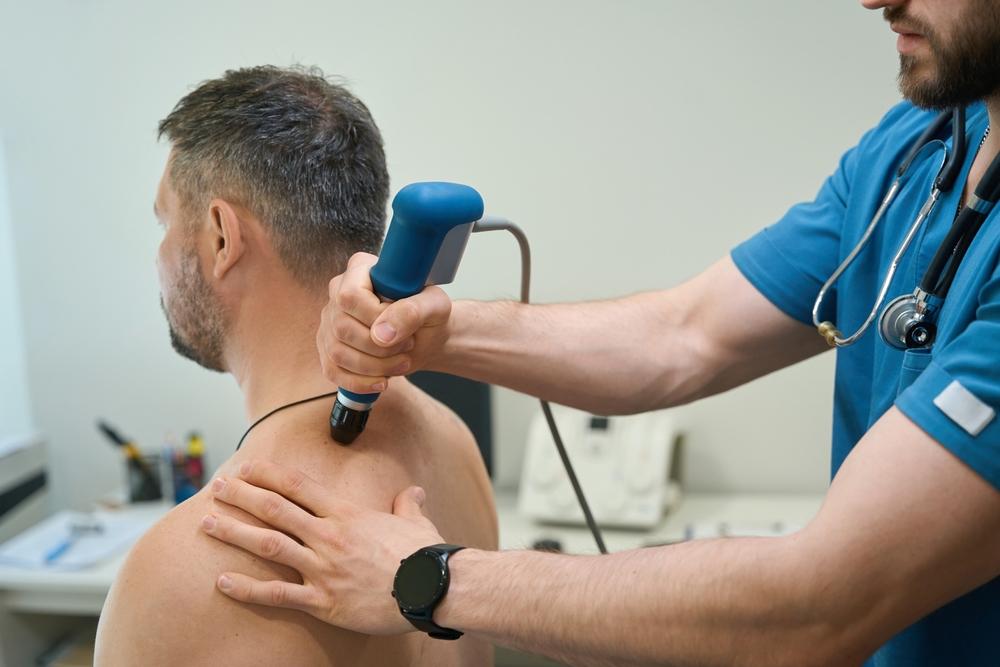
When it comes to addressing various musculoskeletal conditions, healthcare professionals often present two primary options: shockwave therapy and surgery. Both approaches aim to provide relief and promote healing, but they differ significantly in their methods and impact on the patient's overall well-being.
Risks and Complications of Surgery
Surgery, while often necessary for certain medical conditions, carries inherent risks and potential complications that patients should be aware of. Some of the common risks associated with surgical interventions include:
- Infection: Surgical sites are vulnerable to bacterial infections, which can lead to prolonged recovery times, additional medical treatment, and in severe cases, life-threatening complications.
- Bleeding and Blood Clots: Surgical procedures can disrupt the body's natural blood flow, increasing the risk of excessive bleeding or the formation of blood clots, which can have serious consequences.
- Anesthesia Complications: The use of anesthesia during surgery carries its own set of risks, such as adverse reactions, respiratory issues, and potential long-term effects.
- Nerve Damage: Depending on the location and nature of the surgery, there is a risk of inadvertent nerve damage, which can result in numbness, tingling, or even loss of function in the affected area.
- Scarring and Adhesions: Surgical incisions can lead to the formation of scar tissue and adhesions, which can cause discomfort, restrict mobility, and in some cases, require additional interventions to address.
These risks, while manageable in many cases, highlight the importance of carefully weighing the potential benefits against the possible drawbacks of surgical treatment.
Understanding Shockwave Therapy
Shockwave therapy is a non-invasive, drug-free treatment option that has gained recognition in recent years for its ability to address a variety of musculoskeletal conditions. This therapeutic approach utilizes high-energy sound waves, or shockwaves, to stimulate the body's natural healing processes.
The mechanism of action behind shockwave therapy is based on the principle of mechanotransduction, where the mechanical energy from the shockwaves is converted into biological signals that trigger a cascade of cellular responses. These responses include increased blood flow, the release of growth factors, and the activation of stem cells, all of which contribute to the healing and regeneration of damaged tissues.
Conditions Shockwave Therapy Can Help Address
Shockwave therapy has been successfully used to treat a wide range of musculoskeletal conditions, including:
- Plantar fasciitis
- Achilles tendinitis
- Tennis elbow (lateral epicondylitis)
- Shoulder tendinitis (rotator cuff)
- Patellar tendinitis (jumper's knee)
- Calcific tendinitis
- Nonunion fractures
- Delayed union fractures
- Chronic heel pain
- Myofascial pain syndrome
The versatility of shockwave therapy in addressing these diverse conditions has made it an increasingly popular choice among healthcare professionals and patients alike.
The Benefits of Shockwave Therapy
Shockwave therapy offers a range of benefits that make it a compelling alternative to traditional surgical interventions:
- Non-Invasive: Unlike surgery, shockwave therapy is a non-invasive procedure that does not require any incisions or the removal of tissue, reducing the risk of complications and minimizing recovery time.
- Reduced Pain and Inflammation: Shockwave therapy has been shown to effectively reduce pain and inflammation in various musculoskeletal conditions, providing patients with relief and improved mobility.
- Improved Healing: The targeted application of shockwaves can stimulate the body's natural healing processes, accelerating the recovery of damaged tissues and promoting long-term improvements.
- Shorter Recovery Time: Patients undergoing shockwave therapy often experience a quicker recovery period compared to those who undergo surgical procedures, allowing them to return to their daily activities and routines more rapidly.
- Cost-Effective: Shockwave therapy is generally more cost-effective than surgical interventions, making it a more accessible option for many patients.
Is Shockwave Therapy Right for You?
When faced with the decision between shockwave therapy and surgery, it's essential to carefully weigh the risks, benefits, and personal preferences to determine the most suitable course of action for your individual needs. By understanding the key differences between these two approaches, you can make an informed decision that aligns with your health goals and prioritizes your long-term well-being.
If you're struggling with a musculoskeletal condition and are unsure about the best treatment option, schedule a consultation with our experts who specializes in shockwave therapy. We can provide personalized guidance and help you explore the potential benefits of this non-invasive approach, visit ReAlignMed at our office in Chicago, Illinois, or call (773) 665-4400 to book an appointment today.




